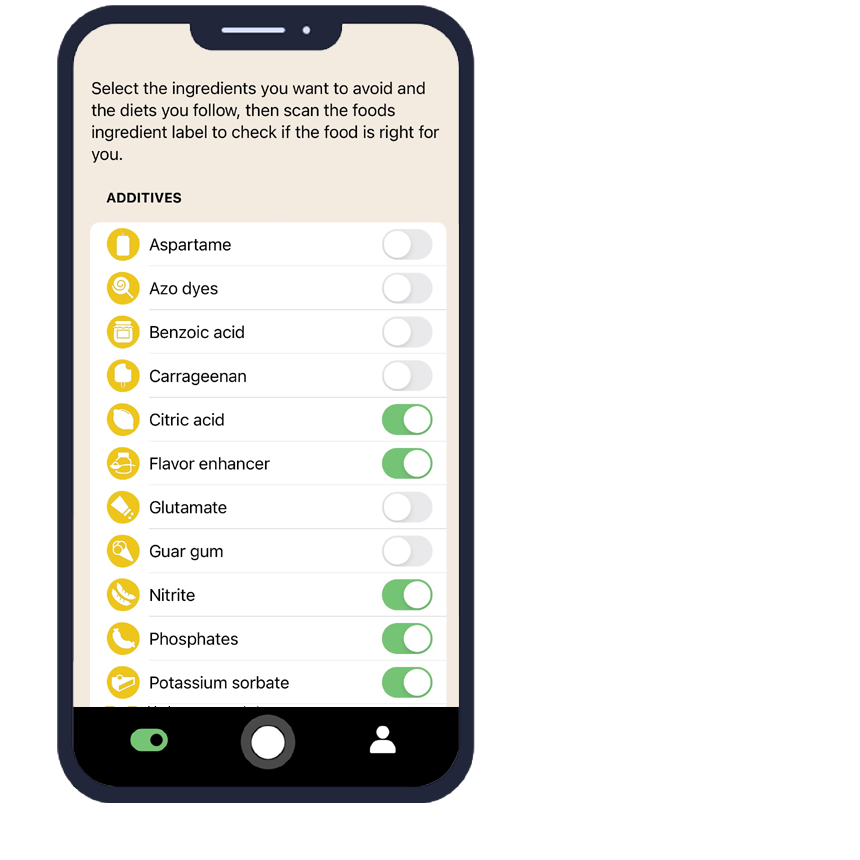Everything You Need to Know About Hazelnut and How AI Eat This Can Help
Hazelnut is one of the most common tree nuts found in countless food products worldwide, but for many consumers, identifying its presence can be challenging and potentially dangerous. Whether you're dealing with a Hazelnut allergy, following specific dietary restrictions, or simply want to avoid this ingredient, understanding where it hides in food products is crucial for your health and wellbeing.
The AI Eat This mobile app revolutionizes how consumers identify Hazelnut and other unwanted ingredients in their food. By scanning ingredient lists in any language, this innovative tool helps millions of people make informed dietary choices and avoid potentially harmful food additives with ease.
What Is Hazelnut and Where Is It Used?
Hazelnut, scientifically known as Corylus avellana, is a tree nut that serves multiple purposes in the food industry. Beyond being consumed as whole nuts, Hazelnut appears in various forms including oil, flour, paste, and flavoring agents in processed foods.
This versatile ingredient enhances flavor profiles and provides nutritional value, making it a popular choice among food manufacturers. However, its widespread use means that Hazelnut can appear in unexpected places, making ingredient identification essential for those with dietary restrictions.
Common Foods Containing Hazelnut
Hazelnut appears in numerous food products, often under different names or as part of complex ingredient formulations. Understanding where to look for this ingredient helps consumers make safer food choices.
- Chocolate products and confectionery items
- Baked goods including cookies, cakes, and pastries
- Breakfast cereals and granola mixes
- Ice cream and frozen desserts
- Nut butters and spreads
- Coffee creamers and flavored beverages
- Salad dressings and cooking oils
- Protein bars and health supplements
Is Hazelnut Safe? What Does the Research Say?
For most people, Hazelnut is considered safe and provides beneficial nutrients including healthy fats, protein, and essential vitamins. The FDA, EFSA, and WHO recognize Hazelnut as generally safe for consumption when properly processed and labeled.
However, safety concerns arise for individuals with specific health conditions or allergies. Regulatory authorities require clear labeling of Hazelnut in food products to protect consumers with dietary restrictions and enable informed decision-making.
Regulatory Approvals and Guidelines
International health authorities maintain strict guidelines for Hazelnut labeling and processing. These regulations ensure that consumers receive accurate information about ingredient presence, allowing them to avoid potential health risks.
Food manufacturers must clearly identify Hazelnut on ingredient lists, often highlighting it in allergen statements. Despite these requirements, cross-contamination and unclear labeling can still pose challenges for sensitive individuals.
Risks for Specific Groups
While generally safe, Hazelnut presents significant risks for certain populations. Understanding these risks helps consumers make appropriate dietary choices and seek medical guidance when necessary.
Individuals with tree nut allergies face the most serious concerns, as Hazelnut allergy can trigger severe reactions including anaphylaxis. Even trace amounts can cause symptoms ranging from mild digestive discomfort to life-threatening responses.
How Does AI Eat This Help You Avoid Hazelnut?
The AI Eat This app transforms ingredient identification by using advanced technology to scan and analyze food labels instantly. This powerful tool recognizes Hazelnut in ingredient lists regardless of language or alternative naming conventions.
Users can set personalized filters for their specific dietary restrictions, ensuring that Hazelnut and other unwanted ingredients are immediately flagged during shopping. The app's database continuously updates to include new products and ingredient variations, providing comprehensive protection.
The scanning feature works in real-time, allowing consumers to make quick decisions while grocery shopping. Simply point your phone's camera at any ingredient list, and AI Eat This will identify potential concerns and suggest safer alternatives.
Who Should Avoid Hazelnut?
Several groups should exercise caution or completely avoid Hazelnut consumption. Understanding these categories helps individuals determine their risk level and appropriate precautions.
People with diagnosed Hazelnut allergy must strictly avoid this ingredient in all forms. Additionally, individuals with broader tree nut allergies may need to avoid Hazelnut due to cross-reactivity concerns and shared processing facilities.
Those following specific dietary protocols, such as certain elimination diets or religious restrictions, may also need to avoid Hazelnut. Consulting with healthcare providers helps determine individual needs and safe consumption levels.
Tips for an Hazelnut-Free Diet
Successfully avoiding Hazelnut requires strategic planning and careful attention to food labels. These practical tips help consumers maintain their dietary restrictions while enjoying varied and nutritious meals.
Always read ingredient lists thoroughly, paying attention to allergen warnings and "may contain" statements. Focus on whole, unprocessed foods when possible, as these typically don't contain hidden Hazelnut ingredients.
- Use AI Eat This to scan all packaged foods before purchasing
- Communicate dietary restrictions clearly when dining out
- Keep emergency medications accessible if you have severe allergies
- Research restaurants and their ingredient sourcing practices
- Consider preparing more meals at home for better control
- Connect with support groups for people with similar dietary restrictions
When shopping for alternatives, look for products specifically labeled as "Hazelnut-free" or "tree nut-free." Many manufacturers now offer dedicated product lines for consumers with food additives concerns and allergies.
Conclusion
Understanding Hazelnut and its presence in food products empowers consumers to make informed dietary choices that support their health goals and safety requirements. While this ingredient offers nutritional benefits for many people, those with allergies or specific dietary restrictions must remain vigilant about ingredient identification.
The AI Eat This app provides an invaluable solution for navigating complex ingredient lists and avoiding unwanted food additives. By combining advanced technology with user-friendly design, this tool makes Hazelnut avoidance accessible and manageable for everyone.
Take control of your dietary restrictions today by downloading AI Eat This for free testing and experience the confidence that comes with knowing exactly what's in your food!

70 filters
With over 70 filters, you can easily avoid certain ingredients and follow your dietary preference.

Paleo

Pescetarian

Ultra-processed food

Vegan







































































